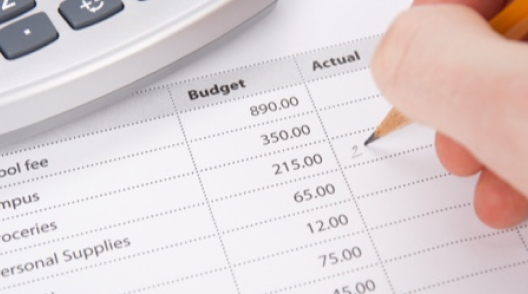Budgeting for students: How to get started
Using a budget can help organize your post-secondary money matters. Here’s what you need to know about creating a student budget.

When you’re beginning life as a post-secondary student, budgeting might seem pretty dull compared to a new school, new classes, new friends and a new place to live. Yet learning to manage your money today might help you avoid financial problems and stress tomorrow. Let’s get started on a strong financial foundation by creating a budget to organize your finances while you’re in school.
Why you need a budget
Chances are you already know a bit about finances. Maybe you have a bank account, or even an education savings account.
Yet when you go off to university or college, your finances can become a little more complex. You might open a chequing account for paying bills, as well as get a student credit card to simplify purchasing textbooks and school supplies. You might even apply for a student line of credit to help fund your studies.
Chances are your parents took care of paying the bills when you were growing up, but now that you’re an adult you need a tool to help you track your own monthly household and education expenses.
A budget lets you see your available income as well as how much money you need to meet your expenses each month. Creating and sticking to a budget gives you guidelines to follow so you don’t run out of money before your bills get paid.
And if you find that there’s not enough money coming in to cover your expenses, you can make your budget stretch by looking for ways to save money. For example, buying used textbooks then selling them at the end of the school year. Save on your food costs by using couponing apps, buying in bulk, dining out less and brewing coffee at home.
Items to include in a budget worksheet
Whether your household includes a family, a couple, or just one student, no two household budgets are the same. However, a good budget worksheet for students might include the following income and expense items.
Typical income items you might find in a student budget include:
- Employment income (take your yearly after-tax earnings, then divide them by 12 to get your average monthly income)
- Loan income (divide your total loan income for the academic year by 12 to get the monthly amount)
- Income from bursaries, scholarships, grants, awards or fellowships (divided by 12 to get the monthly income)
- Financial help from your family
- Education savings
Typical expense items in a student budget include:
- Tuition (divide next year’s tuition by 12 so you know how much to save monthly)
- Books/school supplies
- Rent
- Utilities such as heat, hydro, water and internet (some landlords include this in rent)
- Food
- Phone
- Transportation such as transit, car insurance and gas (check with your school and city transit for student discounts such as U-Pass in Edmonton, Winnipeg or Calgary or the T T C Monthly Student Pass in Toronto)
- Clothes
- Entertainment
- International students will have additional expenses such as health insurance for those studying in Ontario, Manitoba, Nova Scotia, Prince Edward Island or Quebec

The best budget for students
Today we have more options than ever before when it comes to creating and using a personal student budget.
Which budget for students is right for you? It’s simple.
The one you’ll actually use.
Take some time to think about how you like to get your information and track your activity. An interactive student budget calculator can give you a quick overview of how much the upcoming school year is going to cost you, as well as how much money you’ll have for the year.
Love your smartphone? There are a variety of banking and budgeting apps to help you keep tabs on your finances. Or maybe you prefer the old school pencil and paper method. Simply create or print out a monthly template, then fill it in each month.
How to create your first student budget
Let’s get started putting together your budget.
- Gather all your income information (after taxes) to calculate your monthly take-home income.
- Gather all your fixed expenses. These are the costs that are the same every month, such as rent or your phone bill.
- Estimate your variable expenses, which are your bills that change monthly. These are things like food, entertainment, textbooks and exam fees.
- If you’re paying back debt, such as credit cards or loans, include your monthly payments
- Choose a digital or paper-based budgeting method. Tip: if you choose a digital method, look for one that lets you track how much you spend so you can see if your spending is over or under.
- Plug in the numbers.
- Check your progress each month.
The bottom line
Learning to budget is an important part of money management, and helps to establish good financial habits that will help build strong credit for long-term financial success. Sticking to your student budget makes it easier for you to focus on your classes, not on your bank balance. And as you get better at budgeting your everyday expenses, you may find yourself with a surplus each month, which you can put towards saving for a rainy day, travel, etc. It’s never too early to start making real financial progress.
Open a student bank account
Explore chequing accounts and exclusive discounts for students.


